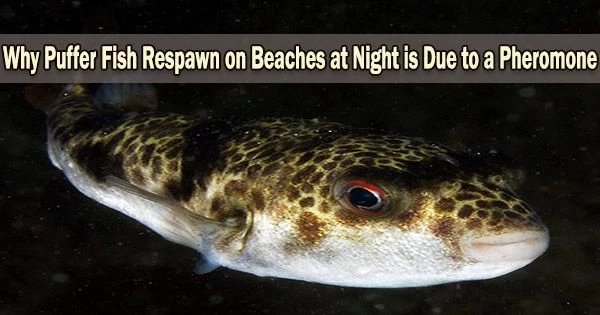There is no scientific evidence of a pheromone that explains pufferfish spawning on beaches under moonlight. However, some species of pufferfish do lay their eggs in sandy areas near the shore, possibly attracted by the light of the moon. The exact mechanisms that drive this behavior are not well understood and are still being studied by scientists.
A group of animal biologists and chemists at the Institute of Transformative Bio-Molecules (ITbM) at Nagoya University in central Japan, in collaboration with Toyota Boshoku Corporation and Niigata University, has identified the pheromone involved in the mechanism that triggers puffer fish to spawn on beaches using moonlight. Their findings are reported in Current Biology.
As described by Aristotle, people throughout history have been fascinated by the moon. The moon cycle and other aspects of animal behavior, such as migration, mating, and feeding, have been linked by scientists for many years. The mechanism by which the lunar rhythm impacts behavior, though it may be crucial to life, is not well known.
Along coastlines around the world, at the time of the spring tide (that is, new moon and full moon), thousands of puffer fish, gather at the water’s edge and perform a writhing motion as they spawn.
These fish are known as ‘semilunar spawners’. Although this impressive show is a well-liked tourist attraction, experts are unsure of how puffer fish synchronize their spawning with the lunar cycle.
Therefore, the Nagoya University researchers used a cutting-edge genomic technique called ecogenomics on grass puffers to better understand this behavior. They discovered 125 genes, including genes essential for reproduction, that were implicated in their spawning behavior.
During the spring tide, the researchers also noticed receptors for a particular pheromone, PGE2. When they applied PGE2 to a tank of puffer fish, both males and females demonstrated their characteristic writhing behavior when spawning.
Furthermore, as the dose increased, the number of responding fish also rose. The researchers came to the conclusion that the PGE2 released by spawning puffers into the sea caused the coordinated beach-spawning activity.
“The synchronization of reproduction with the lunar cycle is not limited to organisms living along the shoreline,” explained lead researcher Professor Takashi Yoshimura. “For example, wildebeest mating and calf delivery in cows are also reported to be synchronized with the lunar cycle,” He believes that this kind of research also has implications for humans.
“It is worth noting,” he said, “that menstrual cycles, sleep-wake cycles, and manic-depressive cycles are synchronized with the moon’s cycle in humans, and the lunar cycle generally affects human biology and behavior.”
















